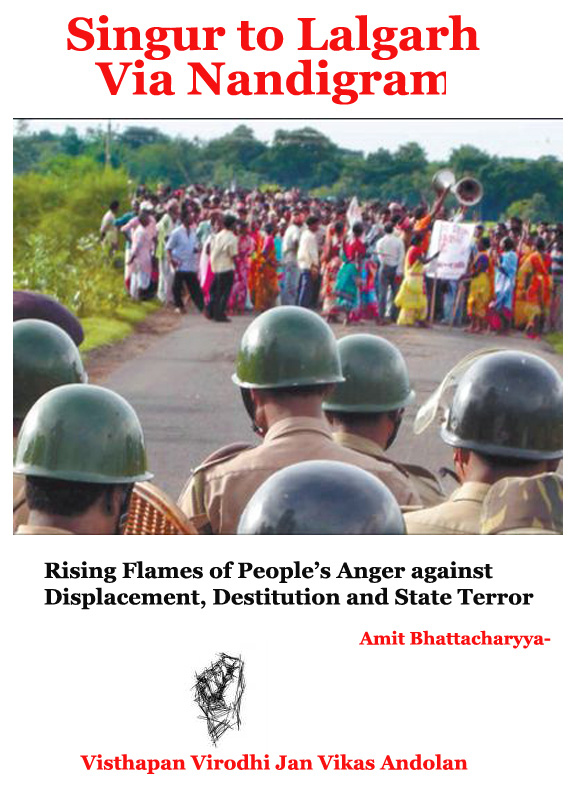At night, Maoists rule Lalgarh
Posted by Admin on August 31, 2009
 On paper, Operation Lalgarh is still on. But in the villages, the Maoists’ writ runs supreme. And their circle of dominance and terror is growing. Caesar Mandal reports
On paper, Operation Lalgarh is still on. But in the villages, the Maoists’ writ runs supreme. And their circle of dominance and terror is growing. Caesar Mandal reports
The veneer of security is stretched too thin over the Maoist badlands of Bengal. And it can often be deceptive. On paper, the Lalgarh Operation that started on June 18 to flush out Maoists is still on. Guns at the ready, the forces are stationed at the outposts. The tarred roads are still being patrolled. But once the sun wanes and the shadows lengthen, the Maoist guerrillas take over.
Policemen and jawans stationed in the three districts of West Midnapore, Bankura and Purulia bordering Bihar and Jharkhand a vast 2,100 sq km terrain of field and forest are aware of this imbalance of power. As are the villagers. So, the indefinite bandh by the Maoists over the past fortnight has been near-total.
Take the case of of Jhargram, the subdivisional town about 200 km from Kolkata. Well-connected by both road and rail, Jhargram is a busy trading centre and tourist spot. Though hundreds of policemen armed with sophisticated weapons have been standing guard here, the bandh call had turned the town into a graveyard.
Though over 50 companies of jawans including central forces are posted in the Maoist-dominated areas, the guerrillas have steadily increased their area of dominance. They constantly moving towards the district headquarters of Midnapore, killing local CPM leaders, ransacking their offices and forcing hundreds of party members to quit.
Late on Sunday, CPM local committee member Ujjal Kundu was shot in Pakuria village near Kantapahari under Lalgarh police station. He was rushed to Midnapore Medical College in a serious condition.
“Over 30 members and leaders of our party have been killed since the operation started,” admitted Bijay Pal, district secretariat member of CPM in West Midnapore. After torching more than 50 CPM offices, the Maoists are now holed in about 20 km from Midnapore town.
Hiran Maity of Sakhakhuli village in Lalgarh has mortgaged his utensils for a sack of rice. He is a seller of broomsticks, but for the past 10 days he hasn’t sold any. Sarala Mandi, another villager, had walked 20 km to the BDO office for relief. She returned empty-handed as the office was under lock and key.
Lalgarh, a small town around 30 km from Jhargram, is the epicentre of this Maoist rebellion. The undulating terrain and the forest cover that stretches to Jharkhand is ideal for hit-and-run guerrilla warfare.
What triggered the Maoist upsurge? Years of deprivation, neglect and grinding poverty. The nearest block primary health centre from the remote hamlets of Belpahari is at least 16 km. Most villagers can’t avail the subsidised rations, because their cards are lying with ration dealers, a major reason behind the ration riots a year ago. Amlashole, from where starvation deaths were reported in 2004, falls in this belt.
The panchayats, mostly run by CPM and Jharkhand Party, had turned into symbols of arrogance and corruption. Leaders, mostly non-tribals, used to call the shots, paying little heed to local problems. The disconnect paved the way for Maoist commander Kishanji and his democratic’ face Chhatradhar Mahato.
Riding on the resentment, Maoists systematically annihilated the local CPM and Jharkhand Party bosses, sometimes with local support. The target was to crush an organised force like the CPM and break the local intelligence network. Even the tribal heads, who had a grip over the community, were silenced.
PCPA, the 10-month old tribal outfit which emerged from Dalilpur a forested hamlet in Binpur-I block as the voice against police atrocities has spread its tentacles to each nook and corner of the region wrenching areas out of the control of the forces and CPM.
Between November 2008 and June 2009, Maoists and PCPA activists kept around 600 sq km of Binpur and Salboni blocks under siege. They wiped out the state machinery by hounding out police, closing down panchayats and preventing government agencies from functioning.
Finally in June 2009, the government had to start a recapture operation involving 50 companies of security forces, including central paramilitary jawans. But, the resilient Maoists have expanded ing their area across 900 villages since the operation began on June 18.
Recently, central forces were seen in te heart of Midnapore town, sparking fears of a bloody ambush by Maoists. “We had a information that an armed squad of Maoists had sneaked in for a sabotage mission,” said a senior police officer.
Cornered CPM leaders who thought Midnapore town a safe shelter, now avoid public places. The rising insecurity among the CPM leadership has helped rebels convince villagers that the CPM-led administration has withered away.
So, no one has dared to defy the indefinite bandh. Instead of the panchayat office, businessmen, shopkeepers and villagers have started approaching the rebels for help.
“We requested Chhatradhar Mahato for relief. He agreed to relax the strike for three hours in the evening,” said Sukhen Baskey, a shopowner at Banspahari. For now, Maoists have an upper hand. But how long? No one seems to have an answer.

























Leave a comment